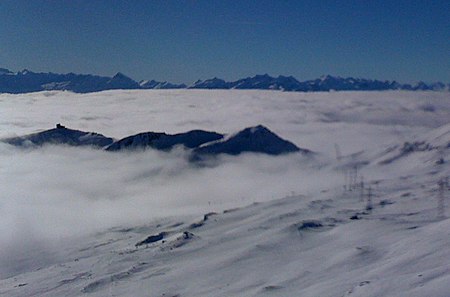Crap Masegn
Graubünden geography stubsMountains of GraubündenMountains of SwitzerlandMountains of the Alps

The Crap Masegn is a mountain of the Glarus Alps, located near Flims in the canton of Graubünden, Switzerland. It lies south of the Vorab. Territorially it divides on the municipal areas of Falera on its eastern face, a narrow southern stripe of Ladir and Ruschein on its western face. There is a station of an aerial cableway of the same name which is nowhere near this peak but one kilometer southeast, on the nameless junction of the two ridges of Crest Da Tiarms and Crest La Siala. There is a chairlift and a gondola lift ending there as well, all of them belonging to the skiing resort of Flims-Laax-Falera which uses the name of Laax only for winter marketing.
Excerpt from the Wikipedia article Crap Masegn (License: CC BY-SA 3.0, Authors, Images).Crap Masegn
Crap Masegn,
Geographical coordinates (GPS) Address Nearby Places Show on map
Geographical coordinates (GPS)
| Latitude | Longitude |
|---|---|
| N 46.850361111111 ° | E 9.1711111111111 ° |
Address
Crap Masegn
Crap Masegn
7153
Grisons, Switzerland
Open on Google Maps










